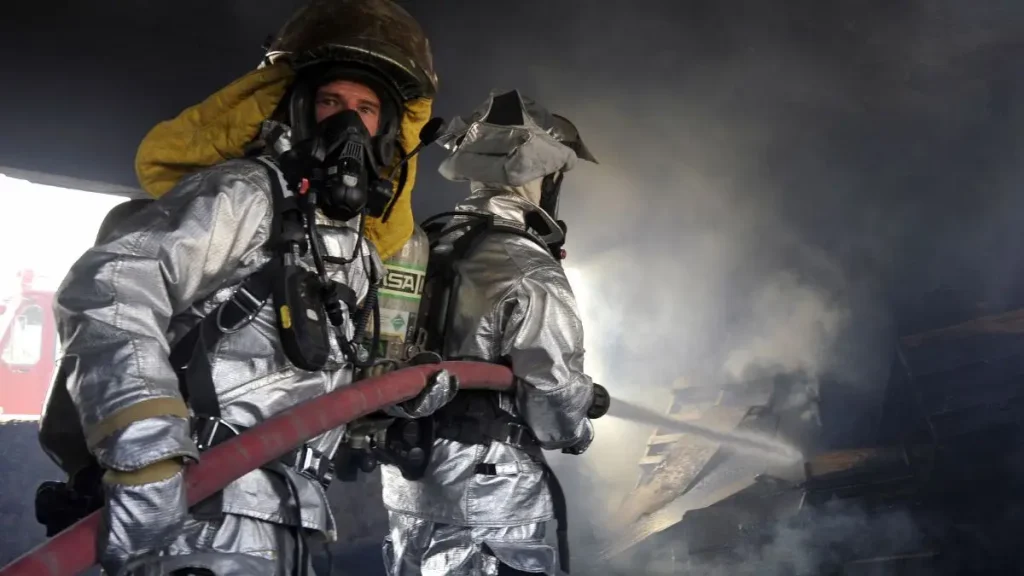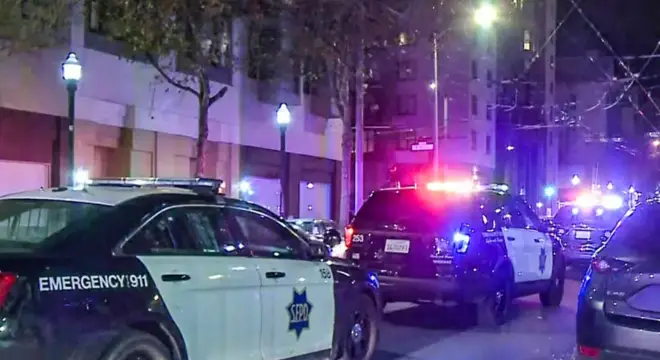Fire Crews Contain Burlington Blaze; Firefighter Taken to Hospital
I was scrolling through the local updates on Monday when the alert came in — a house fire in Burlington, Wisconsin. It was just after 2 p.m., near the intersection of Wisconsin and State Street, and by the time crews from Burlington and Rochester arrived, heavy smoke was already pushing through the front porch.
From what the Burlington Fire Department shared, the winds weren’t gentle that afternoon. Strong gusts carried heat and embers straight into the structure, feeding on the kind of materials that often sit outside homes — wood trim, patio furniture, dry leaves, or even a welcome mat. When those catch, the fire doesn’t wait. It climbs walls, slips under siding, and takes seconds to reach the roofline.
All the people inside made it out safely — and that’s something worth pausing on. Working smoke alarms, quick decisions, and maybe a bit of luck helped everyone get clear. But one firefighter wasn’t as fortunate. While helping to contain the flames, they were injured and taken to a nearby hospital. The good news: the department says the injuries aren’t life-threatening.
If you’ve ever watched a small porch fire turn violent in minutes, you know how unpredictable these moments can be. Wind turns an ordinary call into a full-scale emergency. It’s one reason departments across Wisconsin train so hard for wind-driven fires — they can double in size every 30 seconds.
As of now, investigators haven’t confirmed what started this one. But looking at the scene, it’s a reminder of how small ignition points — a cigarette butt, a loose wire, or stored wood — can spiral out of control when weather and materials line up just wrong.
Before you move on, take a moment to ask yourself: if a fire broke out on your porch right now, how fast could you get everyone out?
On the Front Lines — Firefighters Battle Wind and Flames

When I read the Burlington Fire Department’s update on FOX6Now, one detail stood out — the wind. It wasn’t just a background factor; it was the enemy that day. Firefighters reached the home within minutes, but strong gusts pushed the flames from the porch into the living area before they could even start their full attack line.
Anyone who’s been near a wind-driven fire knows how quickly it turns. A simple flare-up becomes a rolling wall of heat. The report mentioned “combustible materials” feeding that intensity — probably everyday items we all have outside: planters, furniture, maybe stored lumber. Once those catch, even a skilled crew is fighting against physics.
What I keep thinking about is how calm they have to stay. Visibility drops to almost nothing, radios buzz with overlapping voices, and still, each firefighter has to move by feel — hose pressure, airflow, temperature. One misstep, one weak structure underfoot, and things can go wrong fast. That’s what likely happened to the firefighter who was hurt. It’s a risk they take every single call.
What We Know So Far — Confirmed Facts
Here’s what’s certain so far:
- The fire broke out just after 2 p.m. on Monday, Nov. 3.
- Crews from Burlington and Rochester responded within minutes.
- They found heavy smoke pouring from the porch.
- Strong winds and combustible materials helped the fire spread inside.
- All occupants escaped safely.
- One firefighter was taken to the hospital with non-life-threatening injuries.
- The Burlington Fire Department called in extra help to control and extinguish the blaze.
That’s straight from official sources, and right now, it’s all anyone should claim as verified. Everything else — cause, ignition point, exact damage — is still under investigation.
Fire recovery looks different every time — during the Arkwright house fire, multiple departments coordinated not just extinguishing efforts but also post-incident relief for residents.
What We Don’t Know Yet — Investigation Underway
This is the part where patience matters. The Burlington Fire Department has confirmed that investigators are still combing through the scene. Fires like this aren’t solved in a day — they’re reconstructed piece by piece: burn patterns, electrical lines, gas lines, debris samples.
Sometimes, investigators find that a single small detail — a melted plug, a charred piece of siding — tells the whole story. Other times, the exact ignition source never surfaces. What matters most is the process itself. It’s methodical, slow, and absolutely necessary to prevent assumptions.
If you’ve ever wondered what happens after the flames are out, this is it. The scene becomes a classroom. Every burn mark teaches something about how to keep the next one from happening.
A similar deep-dive investigation took place after the Lake County home fire, where officials traced the source days later through wiring patterns and burn trails.
How Common Are House Fires in Wisconsin — Context and Stats

It’s easy to treat one local fire as an isolated event, but numbers tell a bigger truth. According to data from the U.S. Fire Administration, Wisconsin reports hundreds of residential fires each year — many of them sparked by small outdoor ignitions like porch debris, space heaters, or faulty outlets.
Nationwide, the National Fire Protection Association (NFPA) notes that wind-driven fires are among the hardest to control. Even a 10-mph gust can double flame spread speed. That means what happened in Burlington wasn’t random bad luck — it fits a dangerous pattern.
For a town like Burlington, where volunteer departments cover wide areas, a quick, coordinated response makes all the difference. Every minute saved keeps the fire from jumping to the next home, the next block.
It’s also worth noting how rare firefighter injuries are during residential responses here. Each incident like this one reminds the entire community that safety gear, training, and teamwork aren’t just procedures — they’re what bring everyone home.
I often share short real-life fire safety updates and home protection tips straight from verified sources — if you like staying informed, consider joining our community updates on WhatsApp where I post verified incident insights before they hit the headlines.
Safety Lessons for Homeowners — How to Stop Porch Fires Before They Spread
Every time I read about a fire like this, I think about how preventable many of them are. You don’t need expensive equipment or fancy tech—just awareness and a few smart habits.
Start with your porch. It’s the most common ignition zone that people overlook. I’ve seen porches stacked with cardboard boxes, old furniture, even gas cans. The truth is, if it can burn, it shouldn’t sit within three feet of your front wall.
Second, check your wiring. Outdoor outlets and lights take a beating from rain and heat. A cracked wire or overloaded extension cord is all it takes to start a chain reaction.
Third, make it routine. Every month, walk around your home and ask: “If this caught fire, could it spread fast?” Trim the bushes, clear the clutter, keep exits open.
Most people only think about fire safety after an incident nearby. Don’t wait for that. You don’t have to be a firefighter to protect your home—you just have to care enough to look twice.
Before you move on, let me ask you this: when was the last time you checked your smoke alarms or tested your porch outlet?
It’s a pattern echoed in other states too — like the North Haven overnight fire, which started with a single room ignition and turned deadly within minutes.
What Happens Next — Investigation and Recovery
For Burlington’s firefighters, the battle doesn’t end when the flames go out. Now begins the quiet work—reports, cleanup, and figuring out why. The Burlington Fire Department will review response times, conditions, and tactics to make sure they’re ready for the next call. That’s how departments improve: by learning from every incident, no matter how small.
The home’s owners will also face the long process of rebuilding—insurance, inspections, and waiting for that official cause report. It’s the part of every fire that doesn’t make headlines but tests people the most.
If you’re local, this is the time to check in on your community. Drop off food for the family, send a message of support to the firehouse, or share safety info with your neighbors. Every small act helps heal what the flames took away.
Final Word — Gratitude and Takeaway
I’ve covered enough fire stories to know one thing: courage isn’t loud. It’s a firefighter walking into a burning home while the rest of us step back. It’s a neighbor helping someone gather what’s left after the smoke clears.
This Burlington house fire could have ended much worse—but because of quick action, training, and maybe a bit of grace, everyone made it out alive. That’s not luck. That’s commitment.
So here’s my takeaway for you: don’t scroll past these stories. Learn from them. Look at your own porch, your wiring, your safety plan, and make one small change today.
And tell me this—what’s one thing you’ll do this week to make your home a little safer?
If stories like this make you think about preparedness, you’ll find more real-world fire reports and lessons in our Home Incidents section — all written to help you stay alert, not afraid.
Disclaimer: Information in this story is based on official updates and local media reports. Details may change as the investigation continues. Readers are advised to follow verified sources for the latest updates.


